PERFORMANCE ANALYSIS
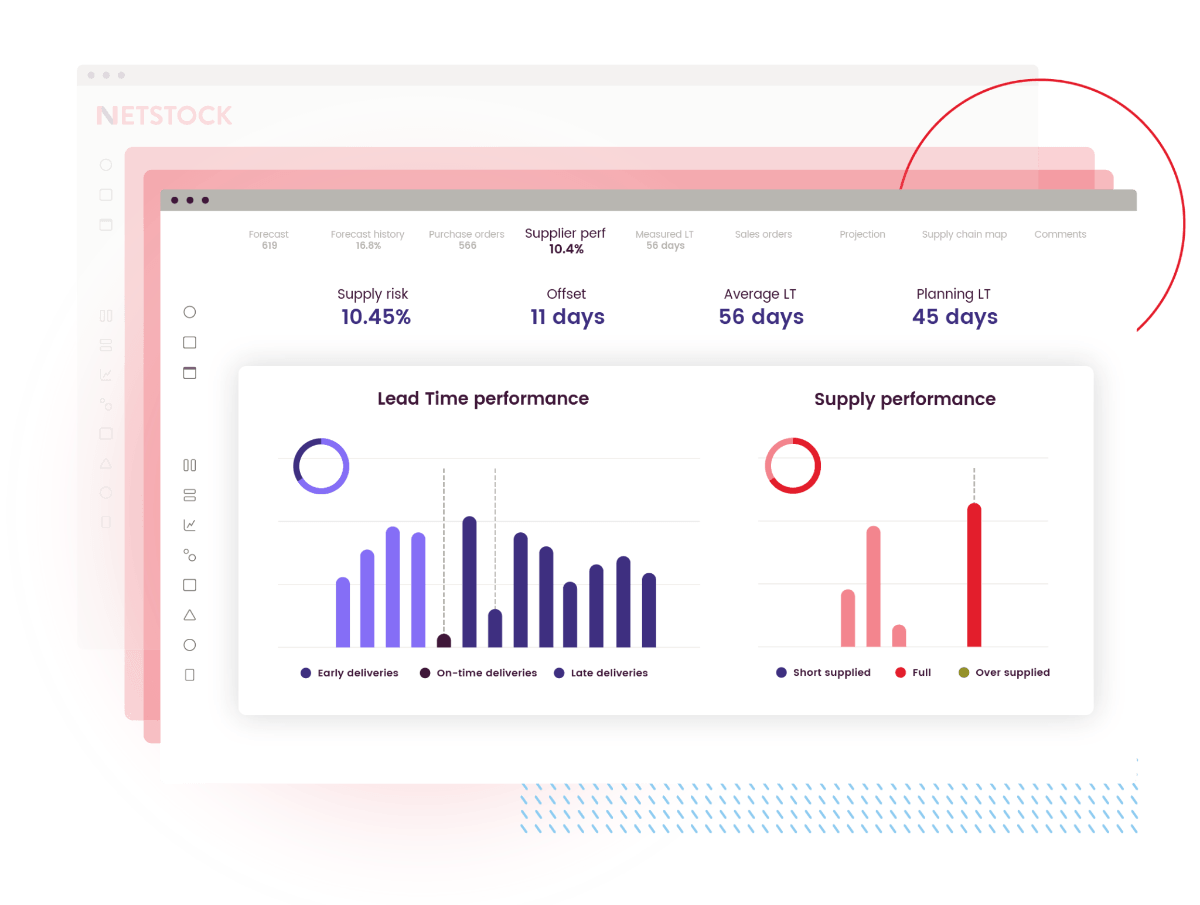
Introducing Netstock’s AI Pack
Netstock’s AI tools help solve specific problems and generate better results - making inventory management faster and easier. With one click, you get an AI expert who collaborates daily to identify and resolve issues, providing actionable recommendations - saving you time to focus on what matters.


Enhance inventory visibility with accurate supplier data
- Measure suppliers’ performance
- Monitor and improve lead times
- Automatically adjust safety stock levels
- Improve supplier information
- Optimize your supplier network
Rapidly respond to changes in supplier performance
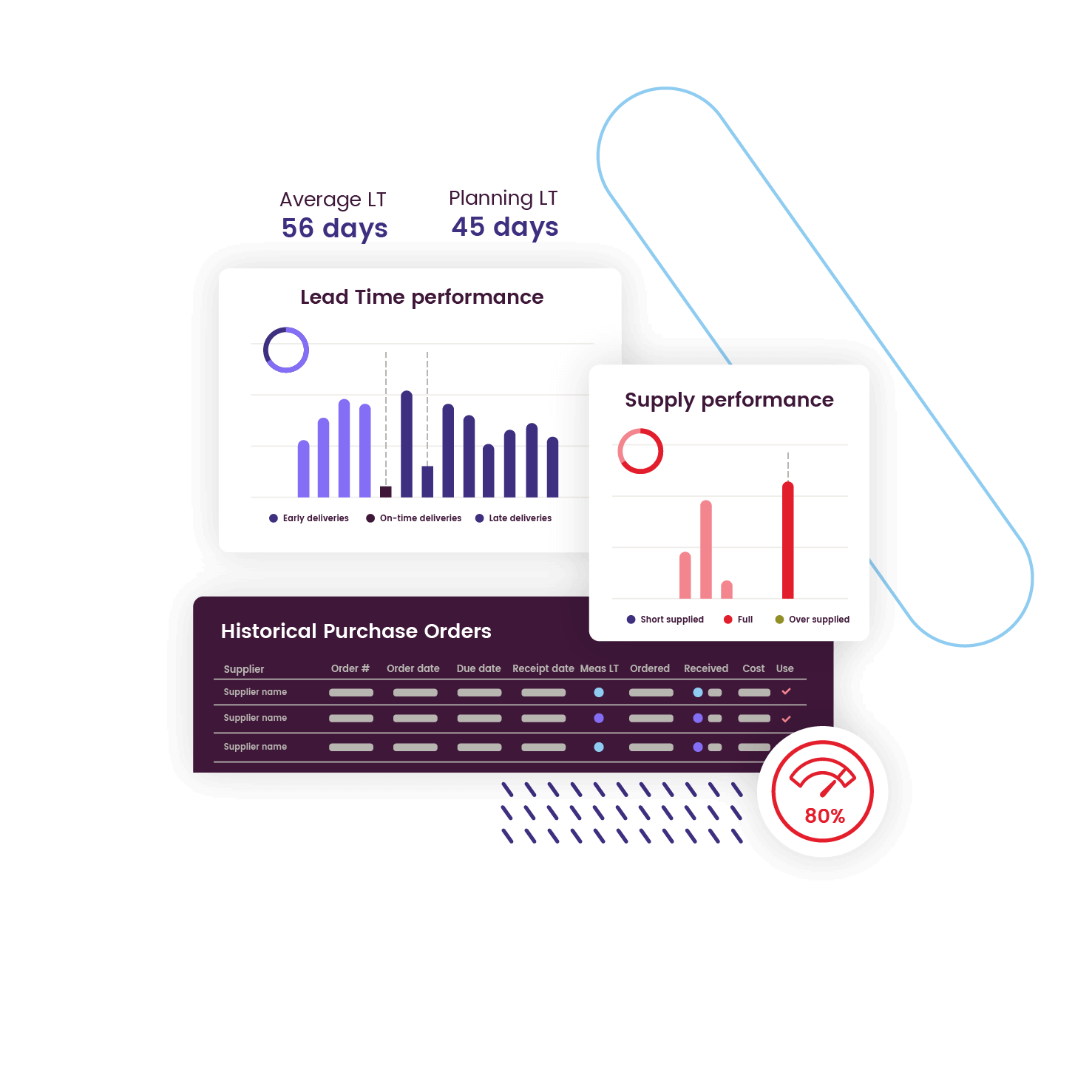
Monitor supplier performance
Monitor key performance indicators to measure each supplier’s performance, including planned vs. measured lead times, and immediately identify suppliers not delivering on time or in full for each item. Using supplier data, Netstock builds a risk profile for each supplier and will automatically adjust your replenishment in line with changes in supply, enabling you to meet customer demand.
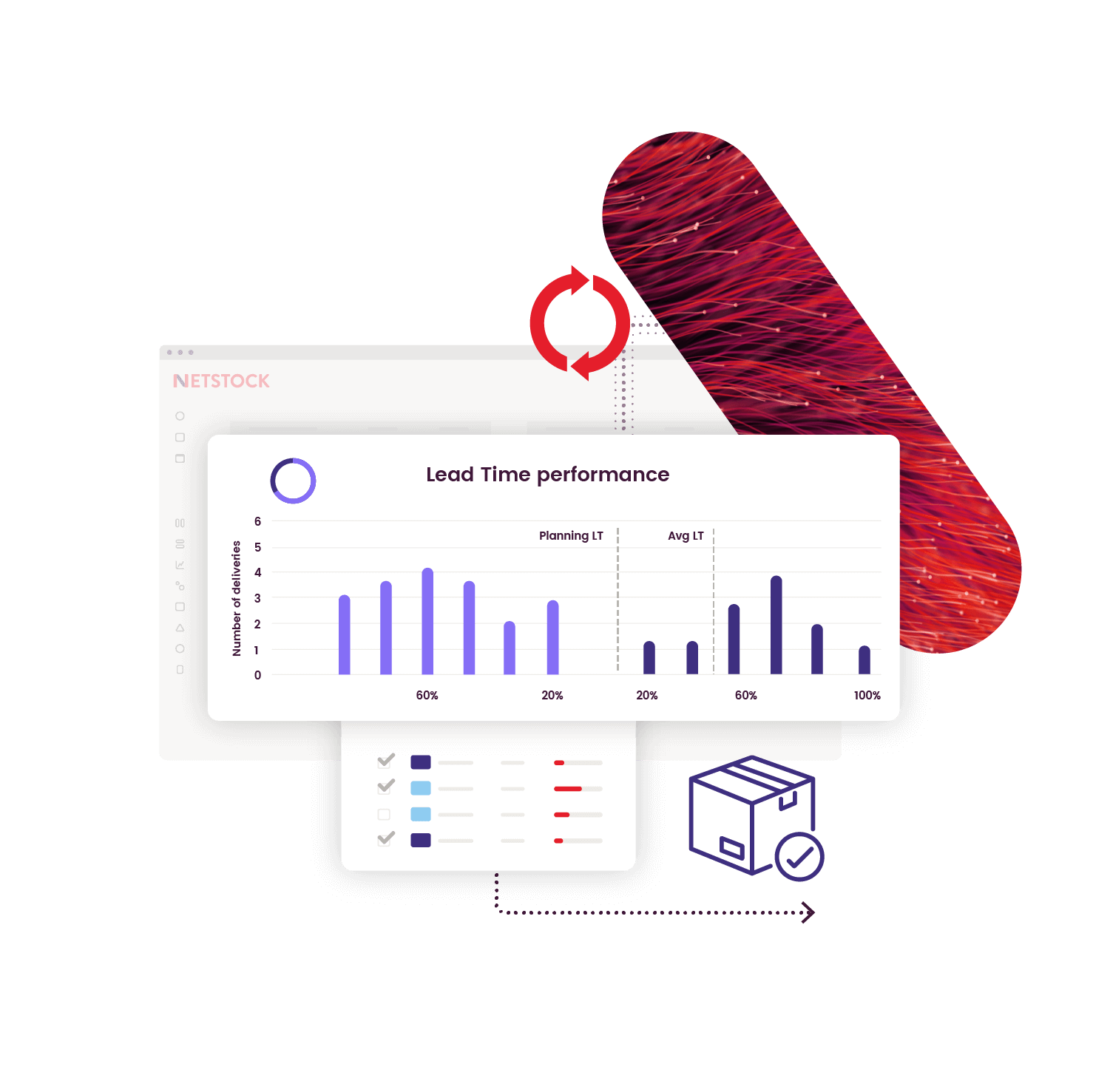
Measure and adjust lead time per item
Dynamically respond to changes in supply by integrating procurement processes that measure lead time by item, supplier, and location. Netstock compensates for poor delivery and excludes outliers while automatically adjusting the amount of safety stock you need to achieve the desired target fill rate.
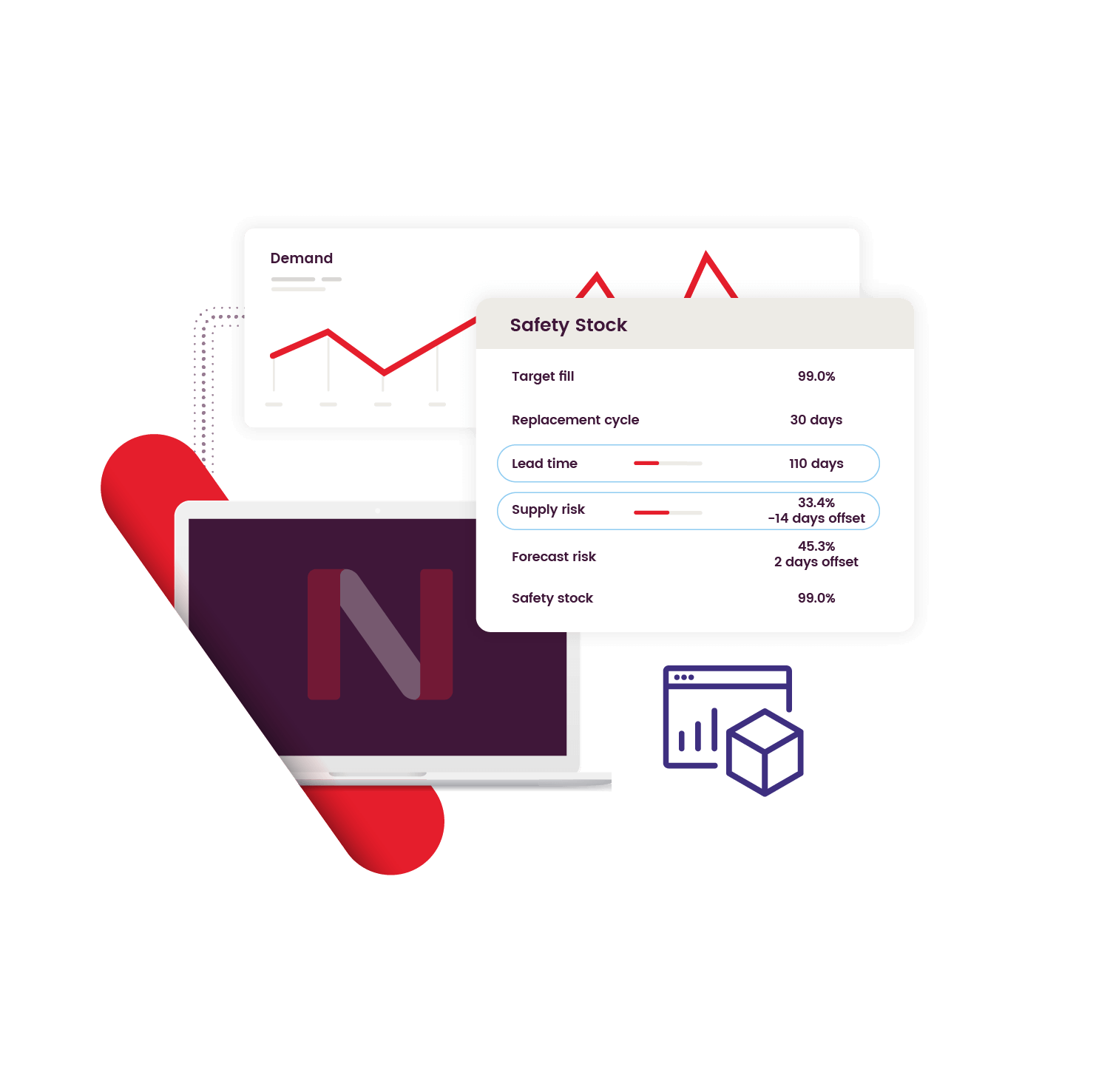
Automatically adjust safety stock levels
Netstock ensures safety stock is dynamic, taking into account unreliable supply and inaccurate forecasting. The less reliable a supplier is or, the longer the lead time, the more safety stock is required for that item.
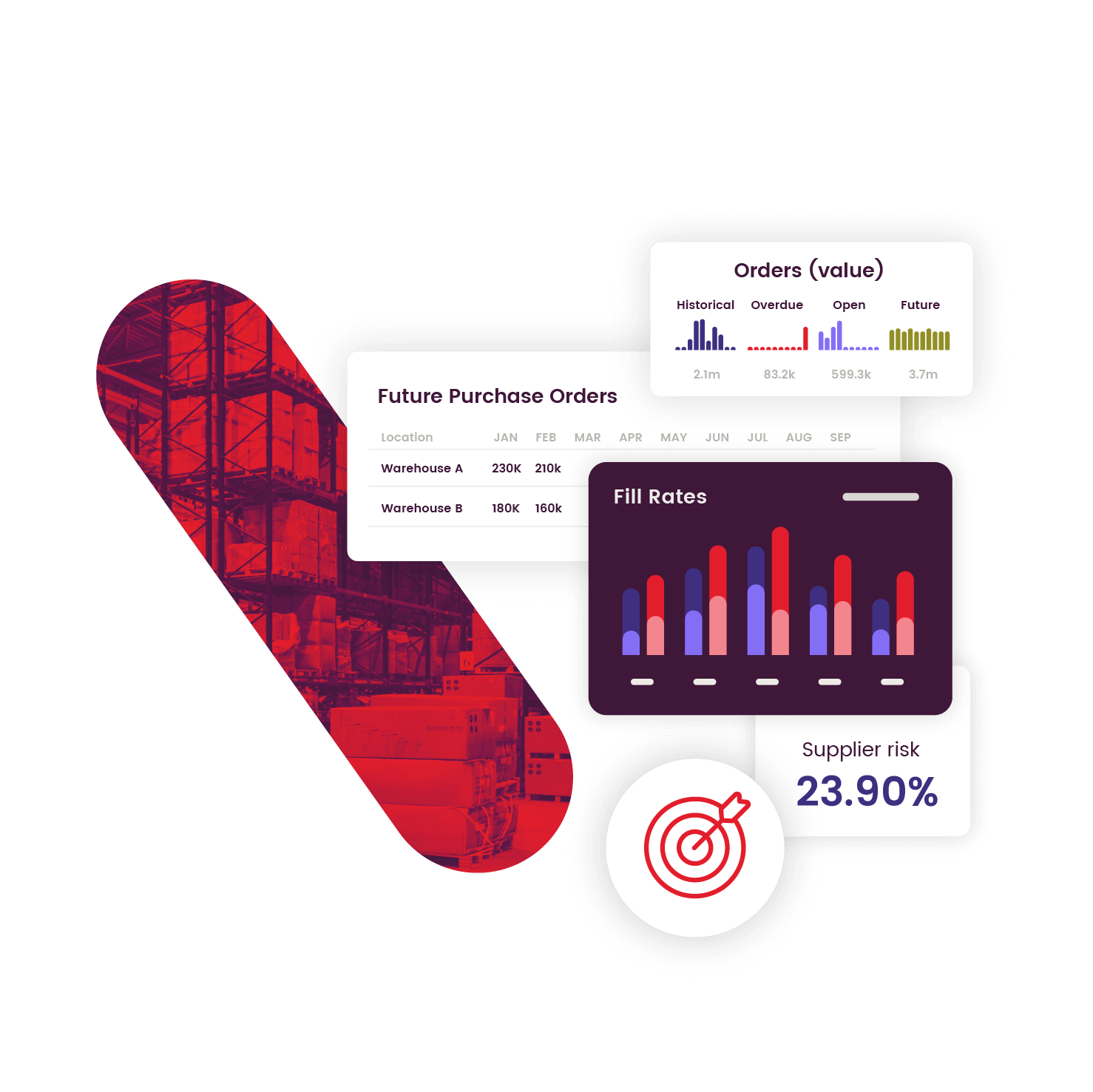
Optimize your supplier network
Summarize each supplier’s historical, overdue, open, and future orders. Enhance your supply chain planning by streamlining supplier onboarding and monitoring delivery performance. Share future purchase orders and spending with suppliers to help them plan more effectively. Keep communication open with preferred suppliers and manually update delivery changes to fine-tune your target fill rate.
Our solutions
Netstock has the solutions you need to help you achieve and manage optimal supply and demand levels.
FAQs about supplier performance
Supplier performance management is a critical component of supplier management that involves monitoring, evaluating, and improving the performance of suppliers to ensure they meet the required standards and expectations. It is essential for businesses to manage supplier performance effectively, as it directly impacts the quality of products or services, customer satisfaction, and ultimately, the bottom line. Effective supplier performance management helps organizations mitigate supplier risk, reduce costs, and improve overall supply chain efficiency.
Effective communication is crucial for successful supplier management. Organizations should communicate regularly with suppliers to ensure they understand expectations, provide feedback, and address any issues promptly. Some effective communication strategies include:
- Regular meetings: Schedule regular meetings with suppliers to discuss performance, address concerns, and set goals.
- Clear expectations: Clearly communicate expectations, requirements, and performance metrics to suppliers.
- Feedback mechanisms: Establish feedback mechanisms to ensure suppliers receive timely and constructive feedback.
- Collaborative problem-solving: Work collaboratively with suppliers to resolve issues and improve performance.
- Supplier portal: Utilize a supplier portal to provide suppliers with access to relevant information, such as performance metrics, order status, and payment information.
By implementing these strategies, organizations can foster strong relationships with suppliers, improve communication, and ultimately, optimize supplier performance.
To assess supplier performance, organizations rely on key performance indicators (KPIs) that offer valuable insights. Some essential KPIs include:
- Supplier scorecards: A comprehensive evaluation of suppliers based on criteria like quality, delivery, and price.
- Lead time: The time from order placement to delivery.
- Defect rate: The percentage of defective products or services received.
- On-time delivery: The percentage of orders delivered as scheduled.
- Quality metrics: Measures of product or service quality, including inspection results and customer feedback.
- Cost savings: The savings achieved through supplier negotiations or process improvements.
- Supplier risk: Metrics that assess supplier risks, such as financial stability and regulatory compliance.
These KPIs provide a holistic view of supplier performance, empowering organizations to make data-driven decisions and improve supplier management processes.
 Inventory
Inventory  Inventory
Inventory  Inventory
Inventory  Supplier
Supplier  Demand
Demand  Capacity
Capacity  S&OP
S&OP